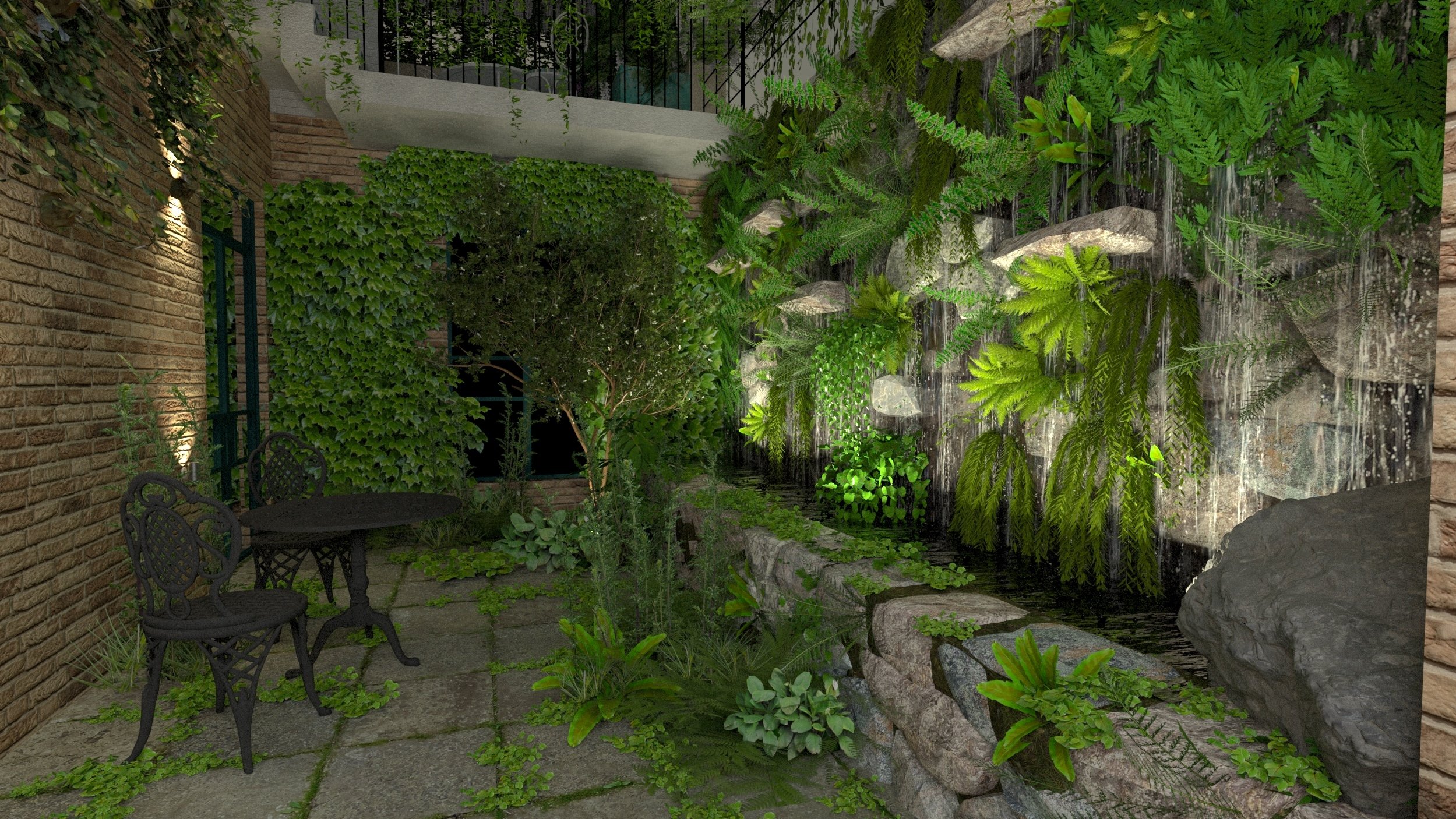Do I need to learn a rendering package?
Rendered visuals are becoming more and more common, some to great effect, others less so. Done well they can give your client a very accurate representation of what their garden will look like, but done badly they can not only look like a video game from 2005 but if they don’t accurately show your proposed design they can give clients the wrong impression.
There are many considerations in deciding whether the potentially long and slow path to learning a rendering engine is right for you, and in this post we’ll take a look at those and hopefully leave you feeling a bit clearer on whether it’s the right route or not.
WHY Render Your Visuals?
Accurate photorealistic representation
This is the biggest advantage (although also the biggest risk) - renders can show realistic textures, lighting, shadows, reflections, plant forms, and atmospheric effects (like weather or time of day), making the design much easier for clients to visualise accurately.More suitable than other options
Some projects - a large country estate for example - really lend themselves to dreamy soft sketchy visuals. Others, however, are smaller and rely on small details to bring them to life, for example a Kensington roof terrace with bespoke joinery and a small but carefully-curated plant palette. In the latter case a render would better show these details and enable a client to fully understand your proposals. Equally some people respond better to the finite finish of a render rather than a vague artistic style.Slickness and professionalism
Renders are “now” - they give the impression that you’re a modern studio constantly keeping your skills up to date. They can also generate excitement and help clients feel more confident in the design proposal, leading to faster approvals and stronger buy-in from them.Marketing
Stunning renders significantly enhance a designer's portfolio and marketing materials, projecting a high level of professionalism and skill, which can attract more clients. We’ve all seen those Instagram accounts full of dreamy visuals - they’re a great way of adding to your social media offeringsLighting
One thing that’s almost impossible to show by other means (SketchUp and hand-drawing in particular) is lighting. Rendering engines have very powerful in-built lights, especially VRay which is what these two images were created with. You can see that the one to the right is the same image as above, only at night time with uplighter in the water feature and an up/down light mounted to the wall by the door. The way that rendering engines handle textures and 3D objects means that it’s really easy to create a realistic impression of proposed lighting solutions.Design exploration & problem solving
Rendering allows designers to easily test different material palettes, planting maturity and furniture types, often with just a few clicks, meaning that if you’re giving options, say for the surfacing on a terrace, it’s easy and quick to show what it would a range of different stone options would look like.
And why not?
Time investment to learn the software
Learning the rendering software takes time. Some, like TwinMotion and Enscape, are reasonably straightforward and can be integrated into SketchUp and Vectorworks, but others, like VRay and Corona, are more complex.Time to create quality models
In order for a model to look good once rendered, it must be damn near perfect. If you create a sketchy finish, whether through Photoshop, Procreate or hand-drawing, it’s very easy to disguise any errors or bits you’ve done quickly, but when you’re rendering everything needs to be done perfectly as errors will be visible. Also finding assets like plants and furniture which are of high enough quality to be used in renderings takes time. Of course setting up your scenes, lighting and cameras also takes a while!Cost
Rendering software, in particular Lumion which is one of the most expensive, isn’t cheap, plus you need to make sure you’ve got a computer powerful enough to use them too. There are a few exceptions - all the packages mentioned here have free or reduced price versions for students, and some, like D5 and Twinmotion, are free.Hardware Requirements
Photorealistic rendering often requires powerful computers (CPU, GPU, RAM), which can be a significant investment, and some (like Lumion) won’t run on a Mac - only a PC.Skill Requirement
Achieving high-quality results requires technical skill and often an artistic eye for composition, lighting, and materials. Poor renders can be detrimental to the overall project. There’s a great article here going into more depth about bad renders.Potential for Misrepresentation
This is probably the biggest downside… Overly idealised renders might set unrealistic expectations for the client regarding plant species, maturity or final appearance. The risk of a client taking a drawing literally and asking why, when the landscapers leave site, there’s not a matura Acanthus mollis next to their new terrace, is much higher than it would be if you’d presented something much vaguer. It’s important to manage expectations when presenting renders.Workflow Complexity
Probably THE biggest question we get when teaching in design colleges is exactly what workflow should someone use (spoiler - there is no perfect workflow), but it should be stated that in general we’d always recommend keeping yours as simple as possible to reduce time, cost and overall stress. Introducing another software package will adds another step to the design workflow.
To summarise, we’d say:
Render when:
The project is complex, large-scale, or involves multiple stakeholders
Clients have expressed a need for realistic visuals
The visual impact is crucial for approval or marketing
Don’t Render when:
The project is small-scale or conceptual
Time and resources are limited, and simpler visuals suffice
Your client prefers hand-drawn or less formal presentations
If you’ve got any thoughts on this and want to share whether you render or not, and how you’ve found it fitted into your existing workflow, then please do leave us a comment below.


